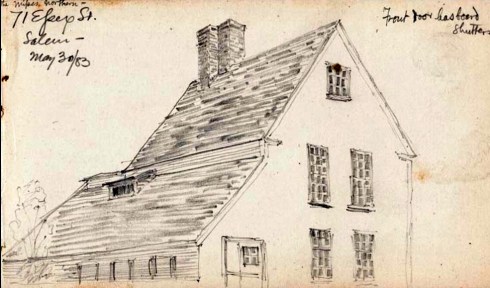It is somewhat difficult to comprehend how chimney sweeps–soot-covered, often very young boys who were virtually enslaved to climb up and down narrow flues, brush in hand–could be transformed into good luck charms in the later nineteenth century, but if you examine more than a handful of vintage New Year’s postcards, especially those from central and northern Europe, you will see them there, along with four-leaf clovers, horseshoes, mushrooms, pigs, and occasionally cats. Only in the British and American traditions do you see Father Time, and the infant new year, and numbers, and because Germany was so dominant in the greeting card industry at the turn of the last century their Schornsteinfeger turn up on cards made for those markets as well. I understand the whole sweeping out the old year message, as well as the basic assurance of a clean chimney (especially now, with my new ones rising!) but that’s about all. The dissonance between the grim reality of one of the dirtiest jobs anywhere, anytime and its artistic representation on greeting cards from the 1880s onward is pretty glaring, as sweeps are depicted in elegant art nouveau compositions, as well as more commercial creations, as laughing, clean children of both genders. And then of course there is the sexy chimney sweep, again of either gender, with the masculine variety usually corrupting (dirtying) some naive chambermaid, and the feminine variety distinguished by her (lack of, form-fitting) dress. The only things that identify all these sweeps as such are their ever-present ladders and/or brushes.





Austrian New Year’s Postcards, Metropolitan Museum of Art and Museum of Fine Arts, Boston.
As you can see from the images below, the angelic (whitewashed) little chimney sweeper sweeping in the New Year became a bit standardized in the 1910s and 1920s, and if the text message wasn’t enough, the addition of other good luck symbols–and even the very American champagne bottle–drove home the message. The very distinctive red-and-white-spotted “red fly” mushrooms (amanita muscaria) are ever-present on New Year’s postcards, even those that don’t feature chimney sweeps, and once again, I’m not precisely sure why. This species of mushroom is credited with both poisonous and hallucinogenic qualities, neither of which translate into good luck (or maybe it is good luck if you don’t eat them), but they were also used as insecticides in some parts of Europe I believe, so maybe there is another “clearing out” connection. Later in the twentieth century, both the chimney sweeps and the toadstools get a bit more abstract and a bit less cute, but they’re still there.



A Selection of New Year’s Postcards from the teens and 1920s available here; Skating scene sourced here; an Estonian card from the later 1950s from here.
The Lucky Chimney Sweep tradition varies quite a bit as you move westward in Europe: I couldn’t really find much of a trace in France and in Great Britain it is more associated with the occasion of weddings than the New Year. I have found several sweep motifs among the New Year’s postcards of Britain’s most prolific publisher, Raphael Tuck & Sons, but they were manufactured in Austria: I imagine a somewhat confused British audience. Given all the horrific stories about the “climbing boys” in Britain, including the well-publicized death of a 12-year-old boy named George Brewster in 1875 which led to the passage of a Parliamentary bill prohibiting the use of such “apprentices” in the same year, it’s hard to see how chimney sweeps could be considered charmed or charming (even with the innocuous images below). John Leighton’s depiction of a shivering and suffering sweep (perhaps from the dreaded Chimney Sweeps’ cancer or “soot wart” though that generally appeared later in life) on a doctor’s doorstep, packaged with what can only be the sarcastic greeting A Merry Christmas and a Happy New Year, is a more realistic sign of the times.



Raphael Tuck & Sons postcards at TuckDB; John Leighton’s Chimney Sweep, c. 1850, at Wellcome Library Images.
















































































